Gay Guide to RIO DE JANEIRO 2021
Affectionately known as The Marvellous City, there is nowhere else on Earth that exudes the same magic and fascination as Rio, party capital of Latin America.

Blessed with beautiful beaches, breathtaking scenery and handsome Cariocas, Rio is pure paradise!
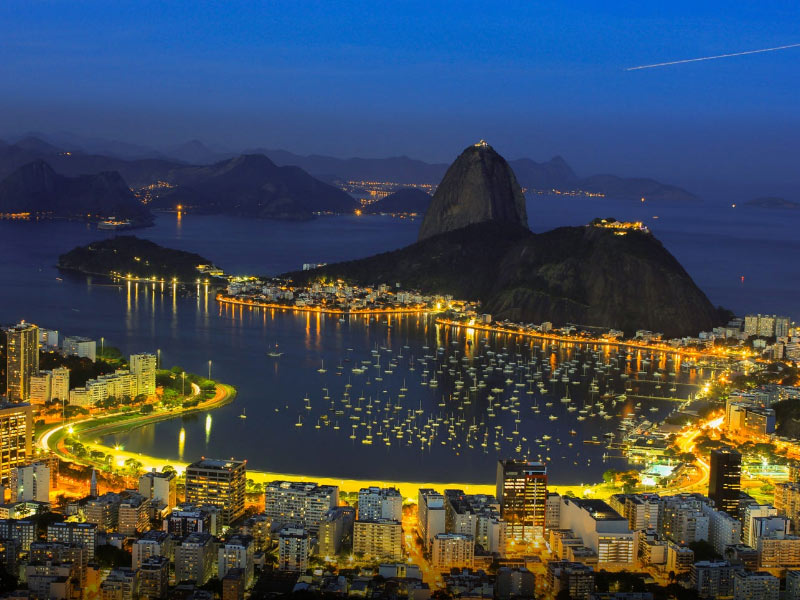
The Marvellous City, as Rio is know, combines the best of beach and city life offering a unique location and holiday experience.
Rio, a city of 6 million people has an infectious appeal that makes it easy to fall in love with as it’s endowed with so many impressive qualities. Just the mere mention of Rio’s name evokes images of sun drenched beaches, samba parades, a laissez faire attitude to life and muscled bodies to die for. This is a city that simply pulsates with energy and yet effortlessly maintains a sultry guise. It is a city of true contrasts – amazingly beautiful, dangerously intriguing and sexy as hell!
Rio is the capital city of the State of Rio de Janeiro and also the undoubted cultural and cosmopolitan centre of Brazil. Situated just north of the Tropic of Capricorn the climate is tropical all year round with an average temperature of 24 degrees. This exuberant city is tucked between the mountains and the sea and has a natural beauty which is scarcely matched by any other city in the world; truly there is something here which will appeal to everyone.
The local residents of Rio, known as ‘Cariocas’, are a friendly bunch who will be more than happy to share their knowledge of the city with you and everywhere you’ll find people approachable and welcoming.
The main language is Portuguese but most people you’ll come into contact with will also have at least a rudimentary grasp of English, so communication should not be a problem. Some basic Spanish will also help and you’ll soon find that body language is a universal language that is spoken very effectively here.
Rio de Janeiro’s reputation with gay travelers is based on an intoxicating cocktail of glamour, beauty, and sex appeal. Long before Rio became a high-profile destination on the queer map, it was on the A-list for globetrotting celebrities and the super-rich. Its importance in Brazil’s history goes back centuries before Carmen Miranda ever donned a fruit-laden hat.
Portuguese explorers arrived at Guanabara Bay in January of 1502; they supposedly mistook the bay for a river, and so named the city Rio de Janeiro (January River). The city was officially founded in 1565, at the foot of Pão de Açucar (Sugarloaf Mountain). The growing metropolis became a major port for Portuguese settlers, who moved their colonial administration here in 1763. In 1808, with Napoleon’s impending invasion of Portugal, the Portuguese royal family fled their homeland and made Rio the new capital of their kingdom. Prince Pedro I declared Brazil independent in 1822, and kept the new nation’s capital in Rio de Janeiro. The city maintained its role as capital after the monarchy was replaced by a republic in 1889.
World travelers first took serious note of Rio’s allure in the early 20th century, when a tunnel was carved into a mountain to connect the thriving city with the beach neighborhood called Copacabana. Word spread about Copacabana’s wide swath of luxuriant beach and indulgent lifestyle, set against the dramatic backdrop of soaring mountains. In 1923, the Copacabana Palace opened, and the deliciously white confection of a hotel further cemented the region’s reputation. Rio would never be the same.
There was plenty of excitement to be had in Rio. Visitors could board cable cars for a thrilling ride to the peak of Pão de Açúcar, the 1,299-foot granite rock where the city was founded. At that time, one of Rio’s best-known landmarks was still in the works. In 1931, Cristo Redentor (Christ the Redeemer), a 98-foot-tall statue of Jesus Christ set atop a mountain, was finished, and cast its unending gaze upon the rapidly growing city. Hollywood began paying increasing attention to the destination too, and movies like the 1933 Fred Astaire/Ginger Rogers musical Flying Down to Rio only added to the aura of glamour that Rio had created.
In 1960, plans for a new national capital came to fruition, when a futuristic inland metropolis called Brasilia was completed. Rio de Janeiro lost its title as Brazil’s capital, but its glamorous reputation continued to draw upscale vacationers. “The Girl from Ipanema,” a bossa nova song by Astrud Gilberto and Stan Getz, won a Grammy in 1965 for record of the year and helped spread the word about what would become Rio’s next hot neighborhood: Ipanema. Gay life in Rio is mainly centred on and around the beach districts of Copacabana and Ipanema, which makes finding your way around a breeze even for first time visitors. One tip: word of mouth works wonders in Rio. If you`re savouring a nice, cool chopp (the local lager), don`t miss the chance of striking up a chat. Rio people love a gringo.
[easy-share buttons=”facebook,twitter,google,pinterest,mail” counters=0 native=”no” hide_names=”yes” ]
Copacabana: With its world-famous beach and raucous nightclubs, Copacabana is Rio’s touristy epicenter.
With plenty of hotels to choose from Copacabana makes for an affordable base and you’ll find a whole host of gay venues including bars, restaurants, saunas and nightclubs. The beach here also always features as a major part of Rio life. Called ‘Bolsa’ it’s mainly frequented by the bear and trans crowds.
TV BAR is a little club in Copacabana. Its cheesy, yet packed with fun and people, partly because of its tiny size and partly because it genuinely is a popular spot. From the classic 90s pop and dance music to the greasy pole in the center of the dance floor, there is nothing sophisticated about this joint – but that is undoubtedly its best quality. Years ago, TV Rio used this space as a set for their shows. Each decorative item and wall sign here was carefully selected by the owners, and there are charming furnishings which add to the overall cheerfiness of the venue. With over 40 different fruity and colorful cocktails available here too, it’s no wonder this spot is a top choice for the gay crowds of Rio night after night.
You can find the Rainbow Kiosk on Copacabana beach, right in front of the internationally renowned Copacabana Palace Hotel. This is a top spot for post-beach cocktails, and, as its name infers, it is especially popular with the LGBT community. Stop here for a light bite, as diners can choose from an array of small South American plates which include empanadas and fresh pastries.

Check out the guys at Station no 9, Farme Gay Beach in Rio! Just look out for the hot swimwear and the gay flags!
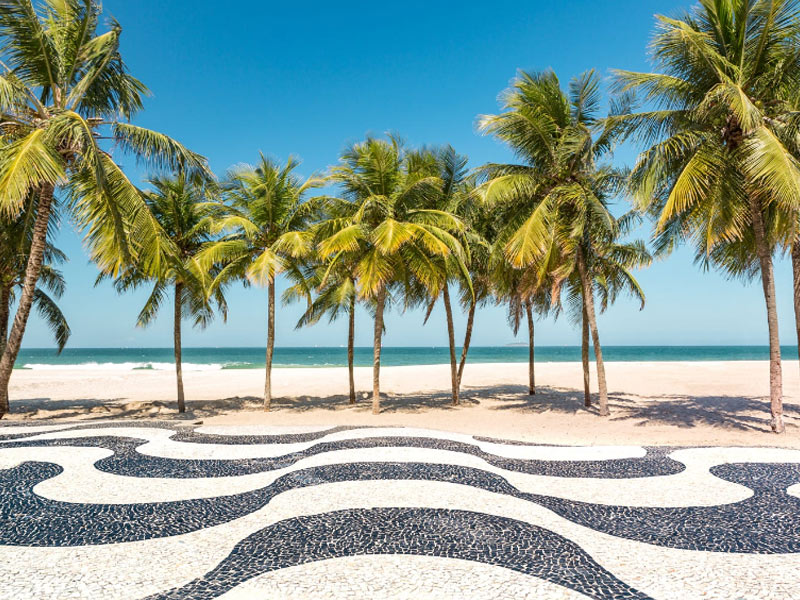
Stroll along the famous tiled pavements of Ipamena and check out the gay neighbourhood at Rua Farme de Amoedo
Ipanema: This trendy district draws crowds but is calmer than Copacabana. Outdoor cafés line the leafy avenues. Rua Farme de Amoedo is the most popular gay village in the city, where public shows of affection by gay couples are a common sight.
Ipanema is smaller, but has a more classy atmosphere and you’ll find world class shopping where you can browse for bargains or simply find a café where you can browse the beauties who also congregate here. The best place to stay in Rio is Ipanema. Charming, green and quite central, the famous district has an èlan about it that Copacabana and Leblon, its two neighbouring districts, cannot boast. Beach life thrives at the ‘Farme’ gay beach, just East from the crossroads of Farme de Amoedo. Look for station 9; this is Barbie land, a term used to describe the buffed, beautiful and rich gay men who favour this stretch of sand and come from the well off South Side of the city and who mix with local celebrities and the great and good of the city.
Sundays at the gay beach in Ipanema are a must, as are a pair of sunglasses to disguise your stares as the stunning pageant parades by. Ipanema shares with Waikiki a glorious vista of natural beauty (Rio has Sugarloaf, Honolulu has Diamond Head) and a promenade of luxurious hotels ringing the ocean. Yet Ipanema–and its more famous neighbor, the curvaceous Copacabana–also contains the playground athleticism, contented faces, and gleaming hard bodies of Mediterranean beach towns. There’s the happy backbeat of lapping surf, soccer balls smacking off thighs, the slap of paddleballs on wood. Silent capoeira dancers leap to these rhythms and to the laughter that accompanies another Brazilian invention, futevole, which resembles beach volleyball (only it’s played with a soccer ball, and you can’t use your hands).
In order to acclimatise, have a drink at the Girl from Ipanema bar (Garota de Ipanema in Portuguese), the site where Vinicius de Moraes wrote the most famous easy listening song ever.
After the beach, between 5-6pm A Bofetada (Farme de Amoedo St) is the meeting place for gay men, lesbians and their straight friends (the scene is very mixed in Rio). A very simple boteco (the local word for bar), it serves tasty appetizers and the addictive caipirinha, Brazil`s premiere cocktail, a delicious mixture of cachaça, crushed lime, sugar and ice. It`s quite easy to just forget about the rest and only do that, but you wouldn`t forgive yourself if you didn`t visit certain landmarks.Try the diva’s drinks. The most popular one honors our Queen: Beyonce. It is made with Jack Daniels, passion fruit and sugar.
00 Bar, Restaurant & Club is a trendy dance club and restaurant with an outdoor terrace hosts a gay night every Sunday. Gávea attracts a sophisticated, upscale crowd—specifically the residents of the high-class Leblon and Ipanema districts.
The gay district of Rio runs along the Rua Teixeira de Melo right next to Farme Gay Beach. Walk around between Galeria Café and Dama de Ferro for a bit of fun. Rua Farme do Amoedo is mixed but has a large gay population.
World famous & Central
Rio’s Neoclassical grande dame has lost none of her stateliness since the 1920’s glory days. Fresh off a $20 million makeover, the 145 contemporary rooms are done up in French fabrics and vibrant Brazilian artwork. Food is a highlight: the property’s six-seat chef’s table at Cipriani Restaurant is one of the hottest spots in town, while the Sunday brunch at Pérgula is perennially packed. Check rates now!
Perfect Pool Views
The second branch of restaurateur Rogério Fasano’s understatedly chic brand appeals to both fashionable São Paulo senhoras and European hipsters. Philippe Starck–designed rooms have billowing silk curtains and 1960’s Sergio Rodrigues chairs; at the ground-floor Fasano al Mare restaurant, chef Paolo Lavezzini prepares scallop risotto and an outstanding rock lobster with broccoli soufflé. What we love most: the rooftop pool, with its knockout views of Ipanema’s crescent-shaped beach. Check for rates!
Panoramic views & central location.
Rua Farme de Amoedo is the most popular gay village in the city, where public shows of affection by gay couples are a common sight. This property is 2 minutes walk from the beach. Ideally located right next to Copacabana Beach, this modern hotel offers a panoramic rooftop pool. Gym, sauna and a fine restaurant are its highlights. Free WiFi access is provided throughout.Check rates now!
Rio boys love a circuit party, which in local speak is called a “label party.” In Brazil, it is common to see ‘GLS’ for gay events, which translates to Gay, Lesbian and Sympathizers (a term for heterosexuals), and is often printed on flyers for parties.

There are several gay-friendly pool parties on in Rio, usually located in Gavea or Barra! Look out for the party flyers on the beach.

Boate 1140 has stood the test of time on the gay scene packing partygoers in for 3+ decades!

The Week is one of the biggest club nights in Latin America with guest DJs and theme parties throughout the year!

Bar 00 – Bar Zero Zero, just defines cool in Rio! A mixed venue with great views, food and cocktails.
Whether you’re after an experience that’s classic, adventurous, or relaxing, Rio has it covered! Start with the well-known sites: Christ the Redeemer and Sugarloaf Mountain will not disappoint. But Rio’s museum scene is heating up, too. The new Museo de Arte do Rio is not to be missed. Check out our editors list the top things to do!

No trip to Rio would be complete without a visit to Sugar Loaf Mountain and the Corcovado.
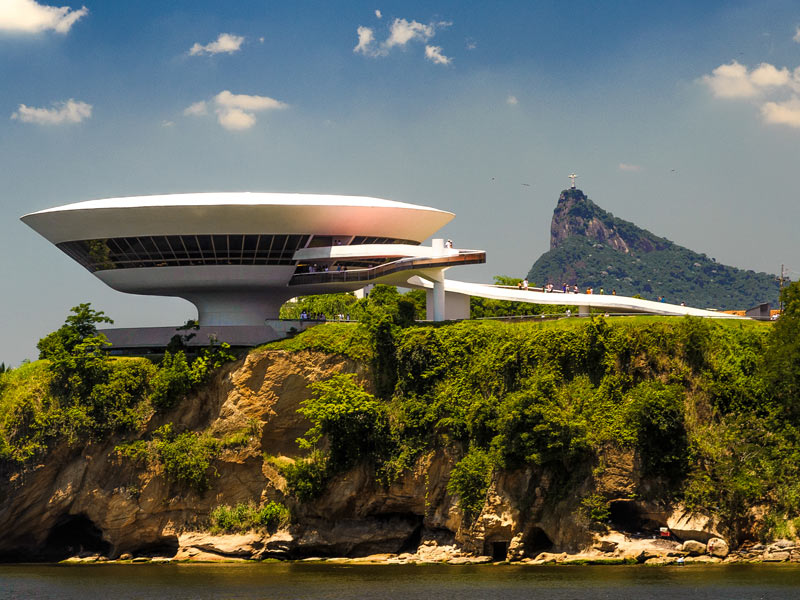
The futuristic Rio Museum looks like something out of a superhero movie, but was built in 1955!
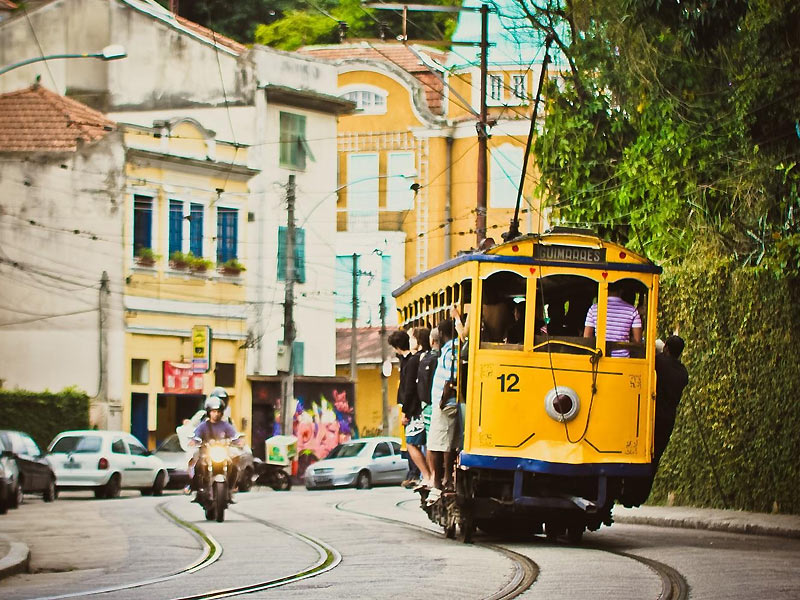
Take a trip on the tram to Santa Teresa and experience a bohemian taste of Brazil.
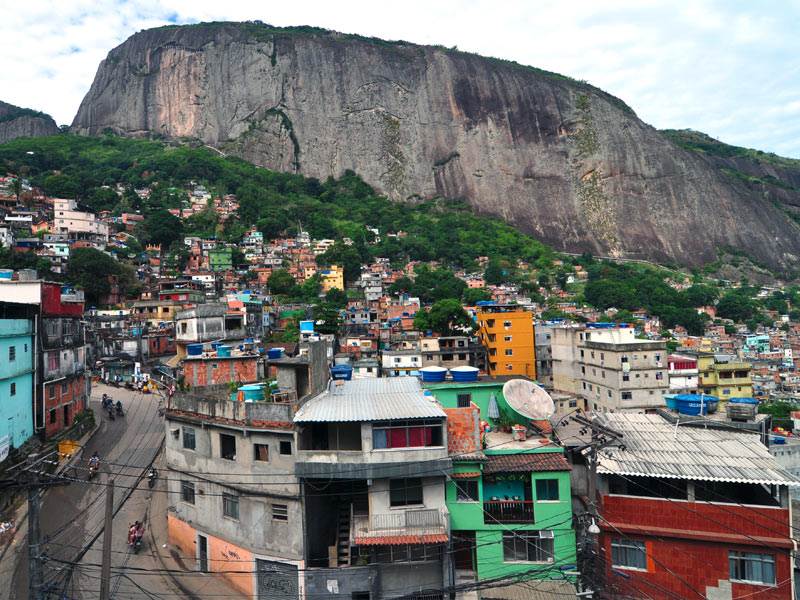
Pay a visit to Latin America`s biggest favela, the famous Roçinha with its unique location and culture!
The Sugar Loaf Mountain and the Corcovado (the one with the statue of Christ) are absolute musts because of the stunning views of the city they provide and the thrill of going up those amazing rock mountains. A tour bus called City Rio offers a good package that includes tickets to both attractions.
Santa Teresa
The hilly historical neighbourhood of Santa Teresa should be on your list of places to visit. Home to an arty, bohemian crowd, you can get there on an early twentieth century tram car that weaves its way up through amazing nineteenth century architecture where you suddenly feel completely cut off from the buzz of the rest of the city. Get the tram at the Arcos da Lapa (everyone knows where it is).
Botanic Gardens
The Botanic Garden will pump your lungs with fresh air and fill your eyes with exotic flora. Created in 1830, it evolved as an experimental project involving tropical plants, seedlings and saplings from the French Guyana, the French Islands in the Indian Ocean and the Portuguese colonies.
Rocinha Favela Rio
Visit Latin America`s biggest favela, the famous Roçinha. Located amid the biggest urban rainforest reserve in the world (Floresta da Tijuca), Roçinha is a labyrinth of alleys, cul-de-sacs and chaotic buildings. And worry not. The locals have long realised the potential of tourism and you`re not any more likely to get mugged there than anywhere else in Rio, which, in recent times, has radically cleaned up its act.
Rio Museum
The historical centre is also well worth a visit. It`s centred round a square called Praça XV. After an aimless stroll through the area, you may as well get the ferry boat to Niterói (the town on the other side of the bay), where modernist architect Oscar Niemeyer recently built a museum of modern art in the shape of a flying saucer. Perched on a rock and framed by the blue sea, it`s already a classic of neo-modernist design.
Lapa
Lapa, the downtown Rio neighborhood that was the birthplace of samba in the early 1920s. In recent years, the area has experienced a Bohemian rebirth, its elegant, Portuguese-style architecture renovated and filled with bars and restaurants. Every weekend, young partygoers wander the streets around the aqueduct, spilling out of the bars and enjoying a range of music that includes reggae, hip-hop, funk, and samba. The neighborhood has grown increasingly popular as an alternative to pricey Ipanema nightlife, attracting both lower-income people from the north side of the city as well as foreigners and wealthy youth from the south side. Lapa has become Rio’s eternal party district. On Friday and Saturday, the neighborhood becomes an epicenter of live music and street party madness where people from all walks of life come together to dance to the beat of the same drum. At the beginning of Mem de Sá street, a bunch of fellow gays meet up before venturing out for a night full of festivities. Oftentimes, there’s enough happening in the streets to fulfil your wildest party needs. Most of the bars are not gay, except for the downscale but lively Cabaret Casanova, which with nearly a century of operation is reportedly the city’s oldest gay club.
Rio’s dining scene has become much more sophisticated than the churrascarias (with grilled meats) and low-key botecos (bars with food) for which it was once known. Now, world-class chefs are creating inspiring fusion cuisine with Brazilian influences, making for some of the most unexpected and best restaurants in Rio de Janeiro.
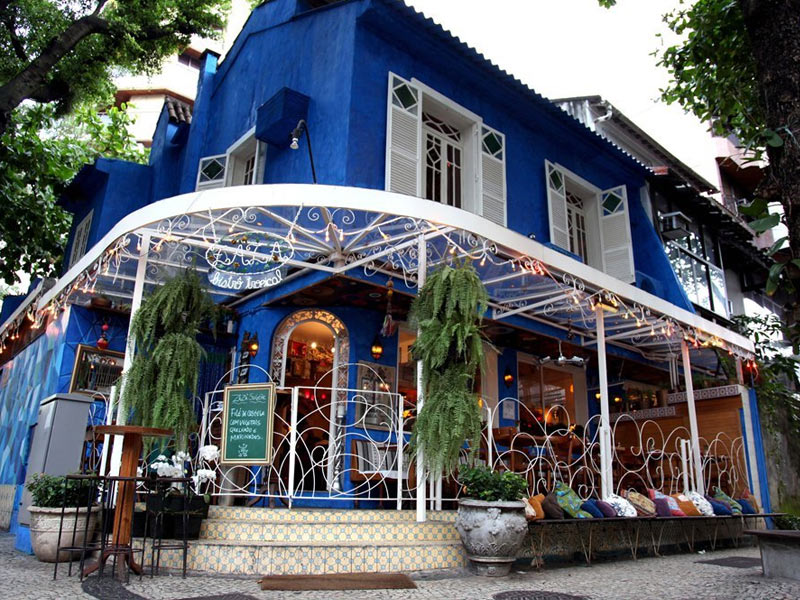
Head to Zazà Bistrô for some great pre-dinner cocktails and inspired menu dishes.
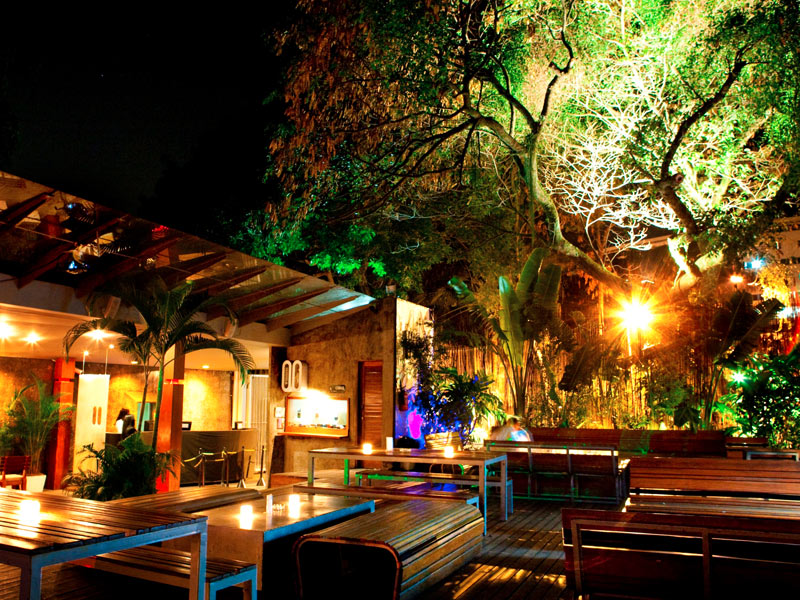
00 Combines a club/party type atmosphere with a cool terrace restaurant!
While you may think you’ve heard everything there is to know Rio—its beautiful beaches, elaborate Carnival celebration, and extremely fit locals—there are plenty of other aspects throughout the city worth exploring. Take a hike through the one of the largest urban rainforests in the world or wander through the distinctly different neighborhoods of the city.

The futuristic Rio Museum looks like something out of a superhero movie, but was built in 1955!

Pay a visit to Latin America`s biggest favela, the famous Roçinha with its unique location and culture!

Take a trip on the tram to Santa Teresa and experience a bohemian taste of Brazil.

No trip to Rio would be complete without a visit to Sugar Loaf Mountain and the Corcovado.
The Mountains
The Sugar Loaf Mountain and the Corcovado (the one with the statue of Christ) are absolute musts because of the stunning views of the city they provide and the thrill of going up those amazing rock mountains. A tour bus called City Rio offers a good package that includes tickets to both attractions.
Santa Teresa
The hilly historical neighbourhood of Santa Teresa should be on your list of places to visit. Home to an arty, bohemian crowd, you can get there on an early twentieth century tram car that weaves its way up through amazing nineteenth century architecture where you suddenly feel completely cut off from the buzz of the rest of the city. Get the tram at the Arcos da Lapa (everyone knows where it is).
Botanic Gardens
The Botanic Garden will pump your lungs with fresh air and fill your eyes with exotic flora. Created in 1830, it evolved as an experimental project involving tropical plants, seedlings and saplings from the French Guyana, the French Islands in the Indian Ocean and the Portuguese colonies.
Rocinha Favela Rio
Visit Latin America`s biggest favela, the famous Roçinha. Located amid the biggest urban rainforest reserve in the world (Floresta da Tijuca), Roçinha is a labyrinth of alleys, cul-de-sacs and chaotic buildings. And worry not. The locals have long realised the potential of tourism and you`re not any more likely to get mugged there than anywhere else in Rio, which, in recent times, has radically cleaned up its act.
Rio Museum
The historical centre is also well worth a visit. It`s centred round a square called Praça XV. After an aimless stroll through the area, you may as well get the ferry boat to Niterói (the town on the other side of the bay), where modernist architect Oscar Niemeyer recently built a museum of modern art in the shape of a flying saucer. Perched on a rock and framed by the blue sea, it`s already a classic of neo-modernist design.
Lapa
Lapa, the downtown Rio neighborhood that was the birthplace of samba in the early 1920s. In recent years, the area has experienced a Bohemian rebirth, its elegant, Portuguese-style architecture renovated and filled with bars and restaurants. Every weekend, young partygoers wander the streets around the aqueduct, spilling out of the bars and enjoying a range of music that includes reggae, hip-hop, funk, and samba. The neighborhood has grown increasingly popular as an alternative to pricey Ipanema nightlife, attracting both lower-income people from the north side of the city as well as foreigners and wealthy youth from the south side. Lapa has become Rio’s eternal party district. On Friday and Saturday, the neighborhood becomes an epicenter of live music and street party madness where people from all walks of life come together to dance to the beat of the same drum. At the beginning of Mem de Sá street, a bunch of fellow gays meet up before venturing out for a night full of festivities. Oftentimes, there’s enough happening in the streets to fulfil your wildest party needs. Most of the bars are not gay, except for the downscale but lively Cabaret Casanova, which with nearly a century of operation is reportedly the city’s oldest gay club.